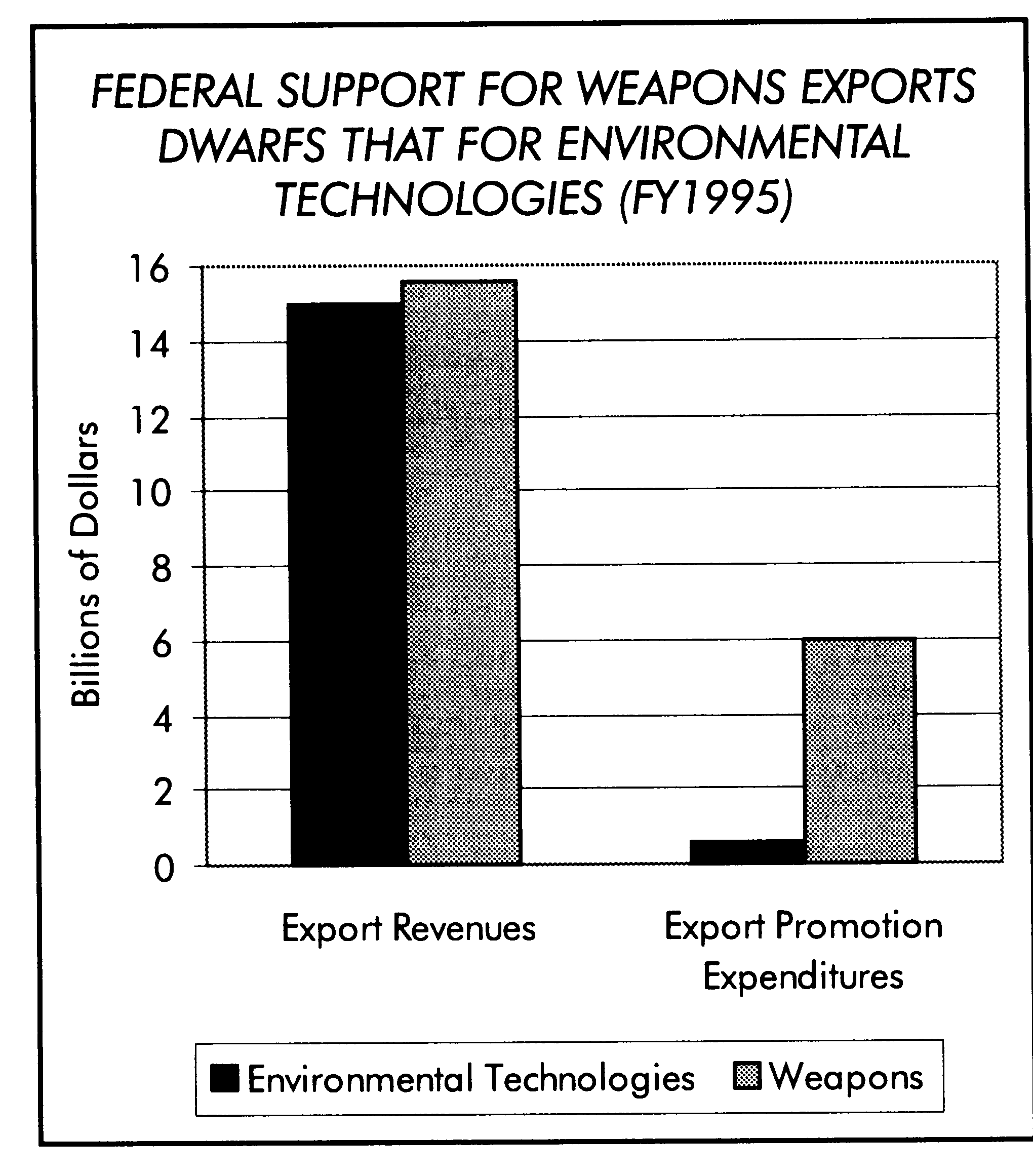
 |
|
| home |
|
——— ——— |
FOR SALE: WEAPONS OR POLLUTION CONTROL By Thad Williamson 
Suppose you are the federal government and need to decide which export sector of the American economy most merits the support of public agencies, and that you have $7.7 billion to spend. One industry is in worldwide decline and, incidentally, contributes directly to international instability and violence. The other industry is growing rapidly, especially in the export sector, meets an ongoing social need, and "has the capacity to improve human health and productivity." Sounds like an easy choice, right? Surely it would be better to bet on the sunrise industry and do some good along the way rather than prop up a sunset industry that contributes to worldwide conflicts. Unfortunately, the residual political structures of the Cold War lead the government to make wildly irrational choices in spending that $7.7 billion. The Clinton administration continues to spend $7 billion a year (as of 1995) to prop up the sale of American-made weapons, according to a 1998 study by Miriam Pemberton and Michael Renner for the National Commission for Economic Conversion and Disarmament. Meanwhile, the government spends a mere $605 million a year to support the burgeoning environmental technology industry. In 1995, the report points out, the dollar value of the arms export sector ($16 billion) and the environmental technology sector ($15 billion) were roughly equivalent, and exports in each sector created about 300,000 jobs for Americans. (The environmental technology sector as a whole employs about 4.3 million Americans, compared to 2.3 million jobs in arms production.) But the arms sector has been lavished with support from the Foreign Military Sales Program of the Defense Security Assistance Agency, the Office of Strategic Industries, and the Agency Support Fund of the Agency for International Development. In contrast, the environmental technology exports are supported by a hodgepodge of tiny programs scattered in different agencies (EPA, Energy, Commerce, AID). The newly created Office of Environmental Technologies has been funded at less than 1% of the level of the Defense Security Assistance Agency. This disparity continues even though a recent Congressional Budget Office (CBO) study said there is no economic justification for subsidies to arms merchants. The CBO found that American arms manufacturers have an inherent advantage over foreign competitors, due to economies of scale resulting from meeting the Pentagonís huge demands for weaponry. And while the Clinton Administration initially recognized development of the environmental technology sector as a strategic priority in 1993, its actual accomplishments in promoting the sector have been modest and disappointing, according to Pemberton and Renner. Yet a potentially lucrative market exists for technology to control and prevent pollution, reduce waste, provide alternative energy sources, and improve the efficiency of using materials in production processes. The authors thus propose a detailed strategy for reconfiguring the nationís de facto "industrial policy" ó by cutting subsidies to arms merchants, drastically enhancing assistance for the development of environmental technology, and supporting conversion programs to help affected weapons firms during a transition period. Pemberton and Renner note hopefully that the basic technologies used by many companies to produce weapons (marine engineering, high energy ultrasound, optical and infrared detectors, etc.) could easily be utilized not on weapons but for environmental purposes if a serious conversion effort were mounted. Sounds like common sense, right? All that is lacking to make this reality is the political will. n
Resources: Pemberton and Rennerís 150-page report, A Tale of Two Markets: Trade in Arms and Environmental Technologies, is available from the National Commission for Economic Conversion and Disarmament and the Institute for Policy Studies (202-234-9382, ext. 214).
Thad Williamson is a doctoral student in political theory at Harvard University and a member of the D&S Collective. Issue #223, May-June 1999 |
|||
Copyright © 2002 Economic Affairs Bureau, Inc. |
||||